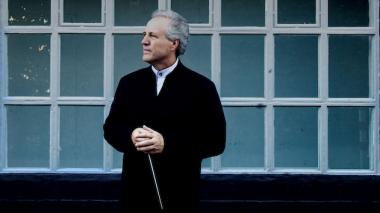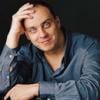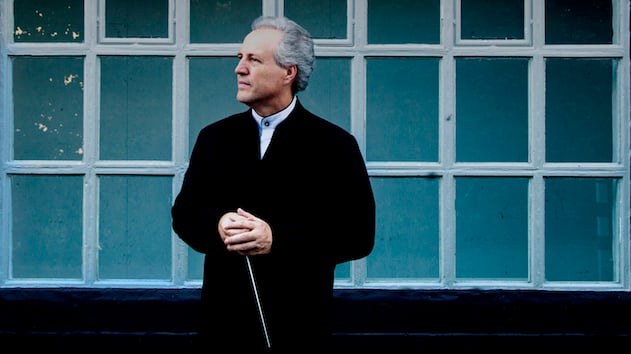
On the morning after his flight from Pittsburgh, with no time for recovery from jet lag, Manfred Honeck was introduced to the San Francisco Symphony for a first rehearsal at Davies Hall, in preparation for his debut with the ensemble this week. His reputation preceded him: He was named music director of the Pittsburgh Symphony Orchestra in 2007, and in 2015 he was said to be among those best suited to replace Alan Gilbert at the New York Philharmonic.
Born and raised in Austria, where he studied violin and later played viola with the Vienna Philharmonic, Honeck switched to conducting and assisted Claudio Abbado with the Gustav Mahler Jugendorchester. He went on to serve as music director or principal guest conductor in Norway, Sweden, Germany, and the Czech Republic. Aside from his reputation, Honeck’s arrival at Davies was preceded by the Symphony players’ receipt of the conductor's carefully notated parts, with time to study before rehearsal. In a friendly phone chat just after that first rehearsal last Saturday, Honeck talked with SFCV about this mode of preparation for performance, and how it relates to his exploration of composers’ musical and emotional intentions.
You’ll be presenting the Tchaikovsky Fifth Symphony and the Shostakovich Suite on the Verses of Michelangelo Buonarroti with the Symphony; which one did you work on today?
The Tchaikovsky.
What were your first impressions of our ensemble?
Very simple: they’re great! Though it’s my first time with them, it doesn’t mean I don’t know them from recordings, including with Blomstedt. With a great work like the Fifth, I have to understand how each orchestra responds to the musical ideas. For example, in the last movement, there are a lot of Russian folk melodies, which are important. Tchaikovsky did not always write everything down as a composer of the 20th century would do, because his Russian musicians would know exactly how to play a polka or a Slavic march. But I feel that the San Francisco orchestra can understand that, so I’m really looking forward to making these concerts with them.
How long did the Symphony players have to study your notated parts?
Three or four weeks. And today they knew the parts very well. But that was just the first rehearsal, with three more to come, to go even more into detail. Let’s see how far we’ll come!
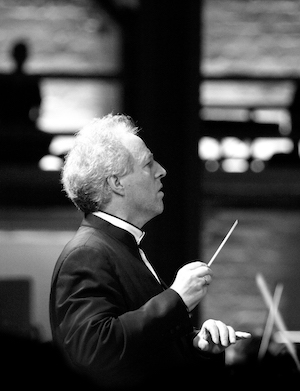
For me, the notation is personally an essential part of my preparation. You look at how a conductor works on a piece: you open the score, and you just look: How is the harmony, the form, the structure, the contrapuntal, and all the instrumentation? But those are things everybody can do. Then you should think about, what is the context, the meaning, in what kind of mood and situation was the composer when he wrote the piece. Was he sad, was he happy? Does the musical material connect with something else? And you may connect with other [conductors’] opinions, but you should never do that before you have your own opinion.
Though sometimes it happens that I hear a recording or a performance and think, there was a solution that was even better! Then I change mine, because I’m interested in the results. You put the phrases of the music into your body, into your hands, because you have to translate what you think about the music into those hands so that the orchestra can read what you think. Don’t misunderstand me, I could just go in and conduct a piece. But if you really want to have your own interpretation — is the note staccato or marcato, is it easy to play — I might need twenty rehearsals, so it’s enormously helpful if an orchestra can learn to work with my parts, and that’s what happened today.
Tell us more about how you develop those parts.
Take a look at the second movement of the Fifth, which starts from pianissimo, from nothing. You have to know that there’s a big connection between the coda of the first movement, which is a death march, a march into desperation, with the contrabasses and bassoons, and the beginning of the second movement, which starts dark, with the low strings. Tchaikovsky himself was quoted as saying, “I fall into the arms of the faith.” How do you do this? First, I don’t start down-bow, because the down-bow on the [bow’s] frog is heavier. I start the opposite, on the up-bow. The second thing is, I change a bit of the dynamic: I don’t write piano, I write pianissimo, because it comes out of nothing. And the third thing I write down is, non-vibrato, so that they don’t have any expression yet, in the beginning of the phrase, but when it goes up, the more vibrato they have to use. When everybody uses the same articulation, it gets much more clean, and, in the context of the music, much stronger in emotion.
I’d assume you get different results from different ensembles, though.
We’re different humans. You can compare that with differences in lifestyle: different cities, different feelings, different atmospheres. But I have a deep respect for the traditions of orchestras, their sounds. Variety is of enormous importance, and the danger of globalization is of losing individuality. I’m always reminded of the quote that Gustav Mahler said one time, which I hope I can translate: “Tradition is the conservation of the fire, and not the adoration of the ashes.” Make the tradition lively, so that it makes sense, but if tradition is only here to celebrate something that is not true any more, then forget it, change it.
What’s Pittsburgh like as a place to be doing classical music and sustaining an orchestra?
The good thing is that we’ve got more audiences than we had in the past, but we have to work with energy to bring it more out to the community. We have a second orchestra, and the opera, ballet, and music schools, but there’s also a very good tradition of sports, with the Pirates, Steelers, and Penguins. I think Pittsburgh is very passionate about their local teams, and the Symphony is one of those teams. On our last tour, we transmitted a concert from the Berlin Philharmoniker directly to Heinz Hall [owned and operated by the Pittsburgh Symphony], and it was completely full there, with people shouting and loving it. I think they understood that the Symphony was the real ambassador of Pittsburgh.
Let’s talk about the other part of your San Francisco program, the Shostakovich Suite on the Verses of Michelangelo Buonarroti.
Shostakovich is in the succession of Russian composers, but it is clear that he brings also a political note: with the way the composer had to live and hide, until he got his own musical language, he would not be possible without the political repression he had to suffer from. He had this big success with Lady MacBeth of Mtsensk, and then was persona non grata because of Stalin, and was abandoned. He had to find a way to survive and present his messages through his music.
As you know, Shostakovich was a big fan of Gustav Mahler, and he copied some ideas from him, the ironic messages and hidden messages. The Michelangelo songs, in the second movement, use brass and trombones with a dark sound, and in the end, he has a powerful message about life and death. The same with Tchaikovsky: His Fifth Symphony is per aspera ad astra, from darkness to light, and Tchaikovsky uses the same darkness with the same low instruments you hear in the Michelangelo.
What about Michelangelo’s poetry? How do the words work for you and through you?
Without the text, it is impossible, and my interpretation will be of second importance, because the most important is the singer, as it is when I’m doing opera. I will have a rehearsal with [baritone] Matthias Goerne on Wednesday, and I will then understand how he wants to describe the phrases.
You’ve worked with him before, and what have you come to appreciate about him?
The Shostakovich will be a first time for our doing it together. Mostly we have done Mahler songs, Schubert and Strauss songs, the Brahms Requiem, countless wonderful musical experiences. His legato is sensational, and his voice, whether low or high [register] is in the same color. With Goerne, with the first breath, you feel already the end of the phrase. Not everybody can do that.
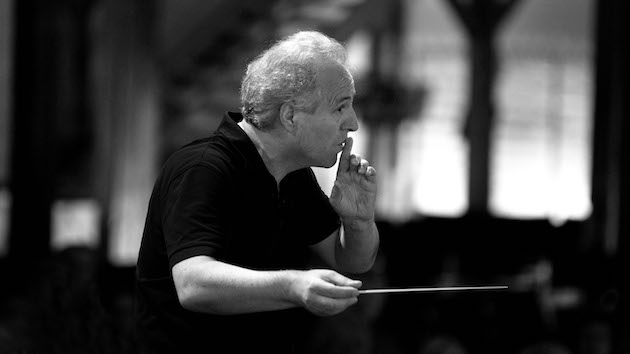
A writer for The New York Times pointed out that you’re a devout Catholic, and he explored the importance of spirituality and faith in your approach to music. Can we apply that to the music you’ll be making here?
It depends on what you mean by “spirituality,” because every detail of a flower is a creation which, if you’re a religious person, you’d say is from God. When you look into music, and go into what the composers themselves were looking for — I’m happy that Tchaikovsky referred to falling into the arms of faith or God. When you hear the first beginnings of darkness, you can also see the light at the end of the tunnel.
I never will ask people to be religious, but emotionally they will understand, and it’s important to teach the audience their options to feel whatever they can feel. Many people will say that they have a spiritual experience. At Avery Fisher Hall in New York, with the Mahler First Symphony, people came to me and said it was so shocking that all 2,500 people were so quiet. It is indescribable, the energy that comes out from the music and the moment when you’re conducting and you give your spirit, your feeling of creation. There is a longing for something else, something higher, some people would say it’s God, some [would say it’s] some other thing.
At one point in that same Times piece, you said, “I’m an instrument ... to make my profession more honest.” When has the profession not been honest?
What I meant, probably, was that you have to be yourself in front of an orchestra. If you lose your artistic integrity, then it’s a part of dishonesty. But there is always a question, how far do you go with that. People have to be with you and for you, when you all play for the audience, you have to get them to understand what you came for. We conductors also have to be sometimes a little more humble. We have to know, it’s not Manfred Honeck, it’s Tchaikovsky and Shostakovich, who wrote the pieces. We have to serve the music. There is sometimes a tendency in our music business that we want to bring out this conductor or this soloist, that the artist is more important than the composer. I like the other attitude better.
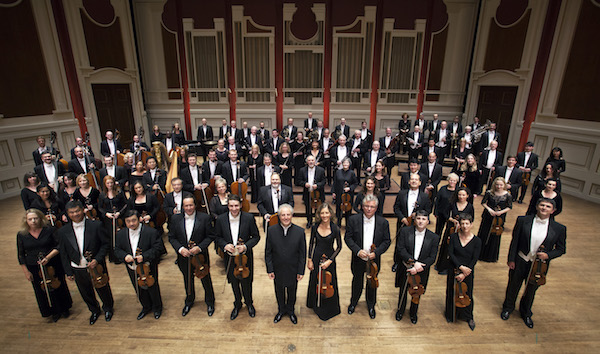
It seems your integrity has been appreciated in Pittsburgh, where they’ll be celebrating the onset of your tenth season later this year. You’ll be doing three new recordings with them on the Reference Recordings label, and you’ll be taking them on a European tour. Will that include a visit to your family?
Yes, they live in Austria. I have six children, the second one is in the Vienna Symphony Orchestra, my brother Reiner is concertmaster with the Vienna Philharmonic, my sister is a cellist in the Vienna Folk Opera, and my older brother, who’s already retired, was in the Frankfurt Opera. And I have four grandchildren.
We’re glad to have gotten you out here. Is it your first time in town?
I think I was here 25 years ago, with Leonard Bernstein, as a viola player. But I love this city, and I can’t wait to see a little more of it in the next few days.
I’m also glad that we were able to give you great weather for your weekend of rehearsals.
I don’t know who ordered that, but it was a very good idea.

